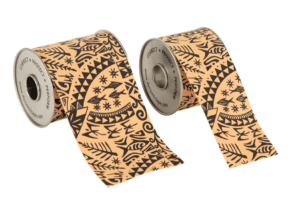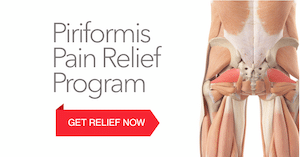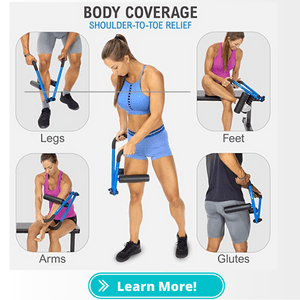How To Use KT Tape For Plantar Fasciitis – Simple Tutorial
Kinesiology tape (KT tape) is an elastic type strip that is often used for foot pain relief and recovery. Its a popular option, mostly because of the trendy colors and patterns on the tape vs. the overall rating on effectiveness. (see why I say that below!)
Here is how to apply kinesiology tape for plantar fasciitis (also called KT tape) to see if it can help.
KT Tape For Plantar Fasciitis
Types of kinesiology tape
Its worth noting there are different styles of kinesiotape. There isn’t necessarily a “best kinesiology tape for plantar fasciitis”. Some are more flexible and “breathable”, while others are a bit more supportive on the spectrum toward athletic tape. This is a key consideration if you’re going to add heat/cold creams over the top of the tape.
KT Tape and Rocktape are two quite popular brands, and offer a very similar type of tape.
Dynamic Tape is another option that I prefer because its a bit more supportive than the others. Via their marketing, they all it “bio-mechanical tape”.

Steps To KT Taping For Plantar Fasciitis
Step 1: Skin Prep
A big part of the battle for taping is getting it to LAST. Failure to prep the skin before applying the tape is probably the main reason for poor tape bonding.
Make sure to clean your foot with a moist towel to remove sweat, lint, and dirt. Dry thoroughly so that you can get a good application surface to anchor the tape to.
Step 2: Pre-Cut Tape
While some brands of kinesiotape are pre-cut, they usually still require cutting for the area of the body you’re applying it to.
There are 2 pieces you want to have prepped for the foot. The first is the piece that will run from the “knuckle” of your big toe to just above your achilles tendon. Measure this length and cut this piece.
The 2nd piece will run across the bottom of the foot. Measure and cut this piece as well.
After cutting the length of these pieces, you will want to round the edges of the tape in order to prevent these areas from lifting after application.
Step 3: Apply Tape
To apply the tape, first plantar flex (point toes + foot like a calf raise) and apply the tape from the toe end to the just above the achilles with NO stretch on the tape.
Next, invert your foot (turn the sole or bottom of your foot inward toward the midline) and apply the anchor of the short strip under the foot. Slightly stretch the tape to pull the foot arch up a little.
After applying the tape, rub the ends carefully to ensure a solid bond.
Wait for up to 30 minutes for the tape to fully bond to skin before participating in activities.
Pros and Cons of Kinesiology Taping For Foot and Heel Pain
Pros:
- Tends to last: Stretchy tapes, when properly applied, can last for many days, often up to a full week.
- Tolerated pretty well: Since KT tapes are stretchy, they tend to be forgiving even when not applied perfectly, so the chances of having to take it off due to discomfort is much less common.
- Better for high activity: Due to the elements above, kinesiology tape can be the g0-to for athletes that need to train and can’t use an athletic tape application, which can limit foot movement and/or come off mid-competition or training session.
Cons:
- Doesn’t offer much support: KT tapes are very stretchy, so they don’t offer much support at all. Consider that unloading the plantar fascia takes a good amount, and compared to classic athletic tape, kinesiology tape doesn’t come even remotely close.
- Stretching the tape in the “right places” could be tough: Since kinesiology tape relies on the concept of modulating sensory input from the tissues, where you place the stretch on the tape “may” be an important factor for getting this result. Since there are different methods for doing this, it may be tougher to get the maximum effect.
Why Athletic Tape May Be A Better Option
Traditional athletic tape has been used forever, and it works extremely well. Its primary function is to support injured tissues, reducing loading, and in some cases immobilize areas from moving.
These factors can be very helpful when you consider the primary problem with plantar fasciitis and/or heel spurs, which is loading the tissues.
Kinesiology tape can offer what is needed for people with very mild cases of discomfort to treat plantar fasciitis, but more advanced and painful cases are going to need something stronger. This is where athletic tape shines.
The Low Dye technique, which is the standard taping for plantar fasciitis, is very effective.
I use this taping method with my own clients to relieve pain, but there are a few common issues with using this method vs. kinesiotape:
- Higher level of skill needed to apply: I do teach a self-application method, which is a scaled back version that will work, but it is not as good as having a skilled practitioner applying the tape for you.
- It only lasts about 1-2 days max: Athletic tape doesn’t have the sticking power that kinesiotape has. It will need to be re-applied daily.
- Poorly applied tape can result in discomfort: If the tape is too tight it can result in reduced blood flow, foot discomfort, and often blisters. This is a big reason for challenges in repeated application, especially if you’re doing it yourself.
Notes on kinesiology tape for plantar fasciitis:
Always make sure you connect with your health care provider for accurate diagnosis and recommendations for using plantar fasciitis taping. Additionally, these tapes use adhesive that some people have skin sensitivity issues with. If any redness or irritation develops, be sure to take it off immediately. Additional notes are found in the directions by their manufacturer.
Taping for plantar fasciitis can be a very helpful supplementary technique to reduce pain, especially when combined with other therapeutic techniques such as self massage therapy, exercise, and stretching. Any therapeutic techniques should be a part of a larger approach to dealing with plantar fasciitis pain, and reducing all other factors that contribute to developing plantar fasciitis.
Sam Visnic
Most Popular Posts
Categories
- Deep Gluteal Pain Syndrome (8)
- Deltoids (2)
- Foam Rolling (2)
- Glutes (9)
- Hamstrings (5)
- Hypnosis for Pain (3)
- Lats (2)
- Levator Scapulae (4)
- Lifestyle (8)
- Massage Therapy (39)
- Mobility (21)
- Movement and Exercise (19)
- Muscles (22)
- Nutrition (2)
- Obliques (1)
- Pain (25)
- Pectorals (3)
- Piriformis (3)
- Plantar Fasciitis (11)
- Psoas (11)
- Quadratus Lumborum (3)
- Quadriceps (2)
- Rhomboids (3)
- Sciatica (1)
- Serratus Anterior (1)
- SI Joint (14)
- Sternocleidomastoid (1)
- Stretching (18)
- Subscapularis (1)
- TMJ (2)
- Trapezius (1)
- Uncategorized (12)










